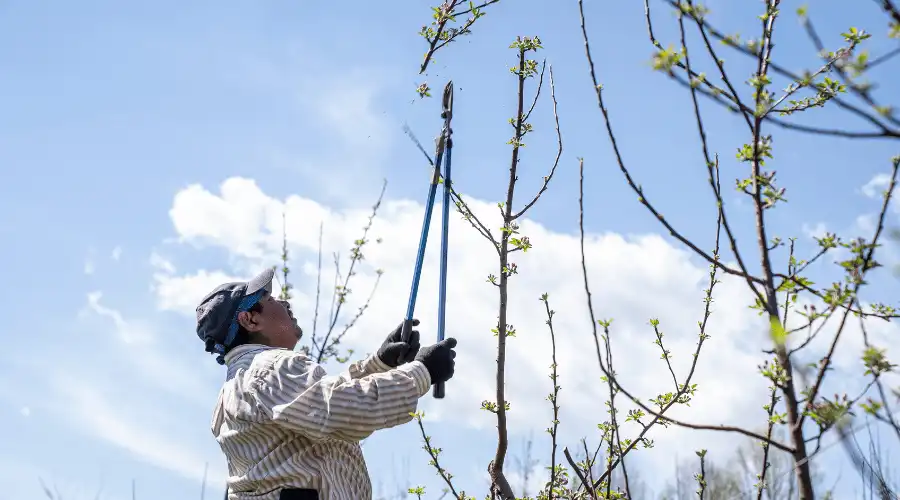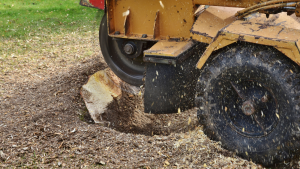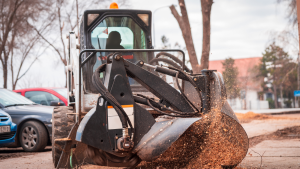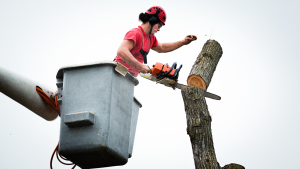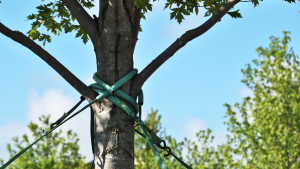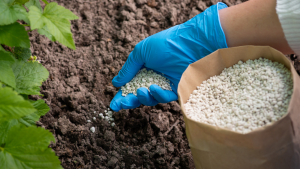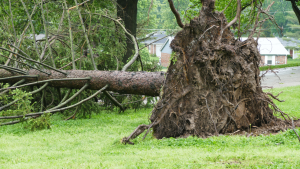When we trim and prune trees, we ensure they stay healthy and live longer. It’s not just about how they look but how they survive and thrive. By cutting off the correct branches, we help them grow better. They get more sunlight, like their food, making them stronger. Trimming also allows airflow through the tree, stopping sickness and helping nearby plants grow well.
So, taking care of trees isn’t just a chore; it’s like giving them a big hug to keep them happy and healthy in our world. Outstanding tree care services that you can trust. Discover unparalleled expertise with Joliet Tree Service, your go-to resource for all tree care requirements in Joliet, Illinois!
What Does it Mean When You Trim a Tree?
Trimming a tree involves carefully cutting off particular branches or portions of a tree to improve its structure, health, or appearance. It’s a meticulous process that requires knowledge of tree biology to ensure the tree’s vitality while achieving the desired shape.
Why Is It Important to Trim Trees?
Tree trimming, also known as pruning, is not just about aesthetic appeal; it plays a pivotal role in the overall well-being of trees. Regular trimming promotes a balanced canopy, eliminates dead or diseased branches, and enhances air circulation. These factors collectively contribute to the tree’s health and vitality.
Should You Trim Trees Regularly?
Absolutely. Regular tree trimming is akin to providing a spa day for these silent giants. It’s not just about aesthetics; it’s about maintaining their well-being. An annual inspection and trim can prevent potential hazards and diseases and ensure healthy growth. However, the frequency and extent of trimming depend on the tree species, age, and the desired outcome.
Much like any living organism, trees require regular care and attention. Routine tree trimming ensures the tree’s structure remains sound, reducing the risk of falling branches during storms or heavy winds. Moreover, it encourages proper sunlight penetration, promoting the growth of vibrant, new foliage.
How to Safely Trim Trees
The health of a tree is closely tied to its ability to photosynthesize effectively. Removing dead or overcrowded branches through trimming enables the tree to focus on more healthful areas. This, in turn, fosters robust growth, improves resistance to diseases, and enhances the overall lifespan of the tree.
Properly Trimming a Tree Limb
When it comes to tree limb trimming, following best practices is crucial. Use proper tools such as pruning shears or saws, ensuring clean cuts to minimize damage. Slit just beyond the branch collar, the elevated section where the branch meets the trunk, to aid in quick healing. Hiring a qualified arborist is advised if the task seems daunting or requires climbing.
Benefits of Tree Trimming
A nicely trimmed tree looks great, but regularly cutting and shaping trees brings even more benefits. Let’s explore some of the good things it does:
- Enhanced Health: Trimming a tree isn’t just cleaning it up; it’s like boosting the tree. When we take away branches that are sick or dead, it helps the tree grow new ones and makes it stronger. It’s like giving the tree a new beginning, helping it grow better and stay healthy.
- Safety and Structural Integrity: Pruning helps keep trees safe when the weather gets rough. Getting rid of weak or dangerous branches stops them from breaking and causing problems during storms or strong winds. It also strengthens the tree, so it lasts longer and doesn’t get hurt easily.
- Aesthetic Appeal and Property Value: When nicely trimmed, trees make a place look better and worth more. A tidy tree doesn’t just make the area prettier; it also makes it fancier. Whether it’s a home or a business place, having well-trimmed trees can make the whole area worth more money because it looks so good.
- Sunlight and Airflow Optimization: Trimming the top part of the tree isn’t just for looks; it helps the tree and its surroundings stay healthier. When sunlight can get through better, trimmed trees can make more food, which allows them to grow strong. It also stops diseases and allows other plants around them to grow better by letting more air in.
- Fruitfulness and Productivity: Regular trimming and pruning are essential for bountiful yields for fruit-bearing trees. Strategic trimming redirects nutrients to the fruit-bearing branches, resulting in larger, healthier fruits. It’s a practice that balances the tree’s energy, maximizing its potential harvest.
Types of Tree Trimming and Pruning
- Crown Pruning: This involves removing branches from the top or sides of the tree to maintain its shape and encourage healthy growth.
- Cleaning: Removing dead, diseased, or weak branches from the tree to prevent potential hazards.
- Thinning: Select components are removed to increase light penetration and improve airflow within the canopy.
- Raising: Elevating the tree’s lower branches for clearance purposes, like over pathways or structures.
- Reduction: Trimming back the size of the tree to decrease its overall spread or height while maintaining its natural form.
Trimming and pruning trees is not just a task; it shows our responsibility to care for our green friends. When we spend time and energy on these tasks, we keep our surroundings beautiful and help the environment stay healthy. So, when you see a trimmed tree, think of it as more than just a neat look—it’s a well-cared-for life living in harmony with nature.
